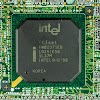Basic Concepts and Definitions

Need
for a Database

Database
Management System (DBMS)
In traditional file processing, data is stored in the form of files. A number of application programs are written by programmers to insert, delete, modify and retrieve data from these files. New application programs will be added to the system as the need arises. For example, consider the Sales and Payroll departments of a company. One user will maintain information about all the salespersons in the Sales department in some file say File1 and another user will maintain details about the payroll of the salesperson in a separate file say File2 in the Payroll Department. Although both the departments need information about the salesperson but they will store information about the salesperson in different files and will use different application programs to access those files.
2.
Data Inconsistency:
If a file is updated then all the files containing similar information must be
updated else it would result in inconsistency of data.
3.
Lack of Data Integration: As data files are independent, accessing
information out of multiple files becomes very difficult. Database approach
overcomes these problems and also adds a lot of advantages and is cussed later.
In database approach, a single repository of data is maintained which is accessed
by different users as per their needs.
Database
Management System (DBMS)
2. Populating
the Database: It
involves storing the data on some storage medium that is controlled by DBMS.
3. Manipulating
the Database: It
involves modifying the database, retrieving data or querying the database,
generating reports from the database etc.
4. Sharing the
Database: Allow
multiple users to access the database at the same time.
5. Protecting
the Database: It
enables protection of the database from software/ hardware failures and
unauthorized access.
6. Maintaining
the Database: It
is easy to adapt to the changing requirements.
Characteristics
of Database Management Systems
2. Insulation
Between Programs and Data: Since the definition of data is stored separately in
a DBMS, any change in the structure of data would be done in the catalogue and
hence programs which access this data need not be modified. This property is
called Program-Data Independence.
3. Sharing of
Data: A
multi user environment allows multiple users to access the database
simultaneously. Thus a DBMS must include concurrency control software to allow
simultaneous access of data in the database without any inconsistency problems.
Types of Users
of DBMS
1.
End Users: Users who use the database for querying, modifying and generating
reports as per their needs. They are not concerned about the working and
designing of the database. They simply use the DBMS to get their task done.
2.
Database Administrator (DBA): As the name implies, the DBA
administers the database and the DBMS. The DBA is responsible for authoring
access, monitoring its use, providing technical support, acquiring software and
hardware resources.
3.
Application Programmers: Application programs write application
programs to interact with the database. These programs are written in high
level languages and SQL to interact with the database.
4.
System Analyst: System analyst determines the requirements of the end users and
then develops
specifications to meet these requirements. A system analyst plays a major
role in the database
design and all the technical, economic and feasibility aspects.
Advantages of using
DBMS Approach
2. Improved
Consistency: The
chances of data inconsistencies in a database are also reduced as there is a
single copy of data that is accessed or updated by all the users.
3. Improved
Availability: Same
information is made available to different users. This helps sharing of
information by various users of the database.
4. Improved
Security: Though
there is improvement in the availability of information to users, it may also
be required to restrict the access to confidential information. By making use
of passwords and controlling users' database access rights, the DBA can provide
security to the database.
5. User
Friendly: Using
a DBMS, it becomes very easy to access, modify and delete data. It reduces the
dependency of users on computer specialists to perform various data related
operations in a DBMS because of its user friendly interface.
Limitations of using DBMS Approach
2. Security and Recovery Overheads: Unauthorized access to a database can lead to threat to the individual or organization depending on the data stored. Also the data must be regularly backed up to prevent its loss due to fire, earthquakes, etc. Hence the DBMS approach is usually not preferred when the database is small, well defined, less frequently changed and used by few users.












0 Comments